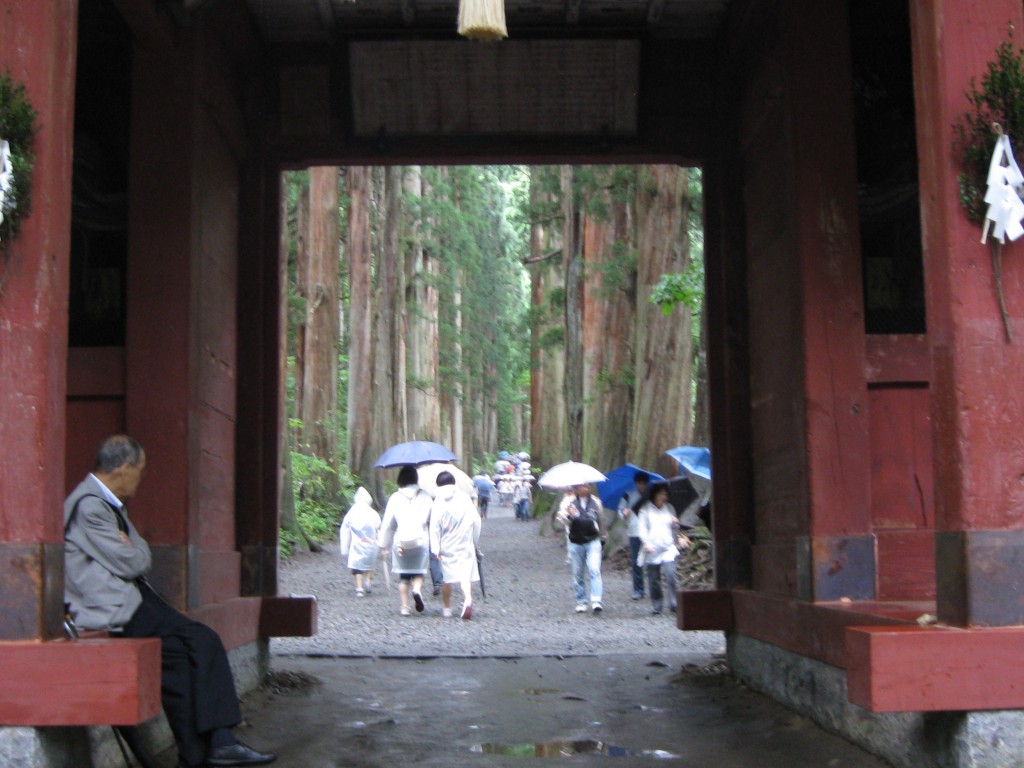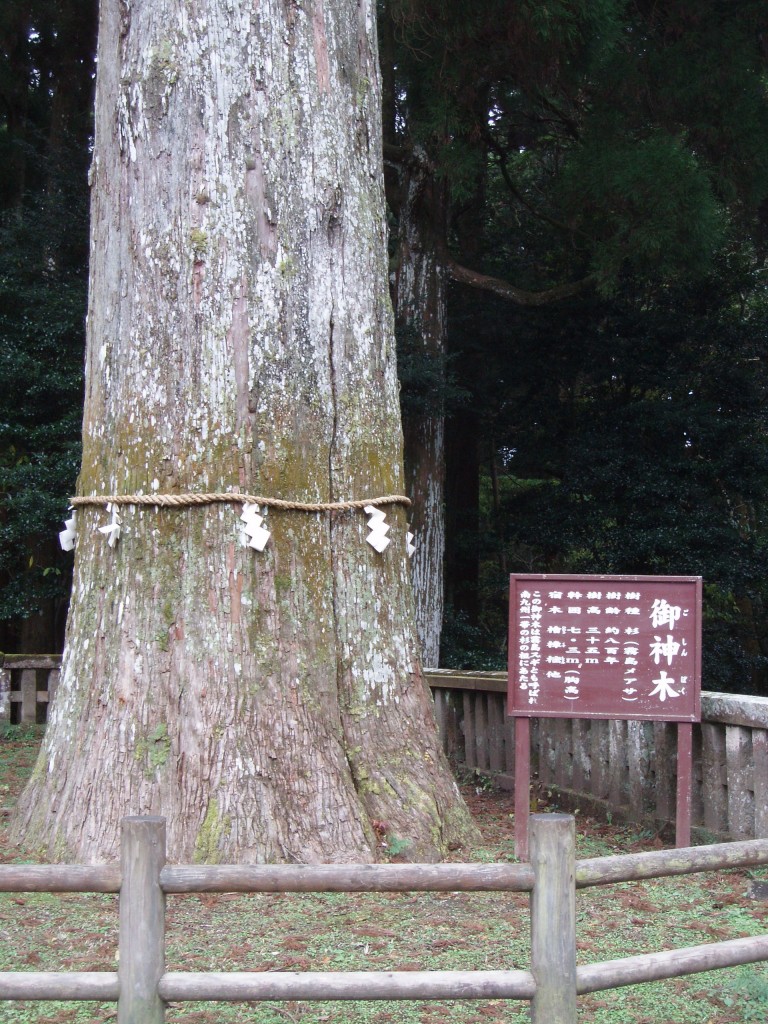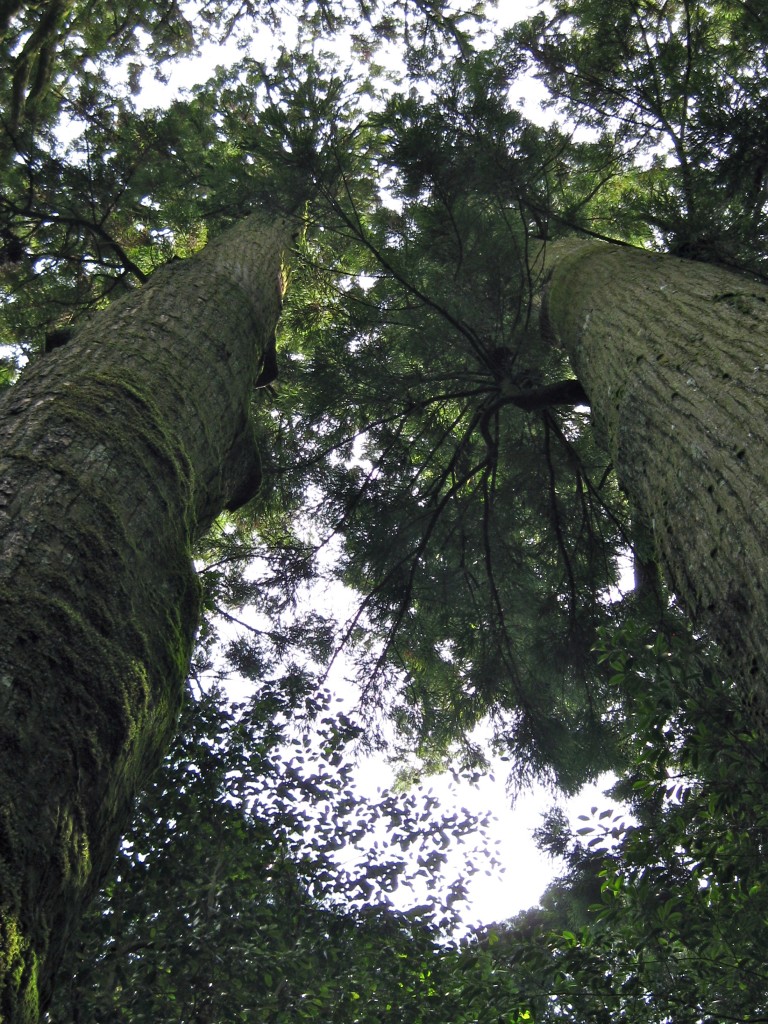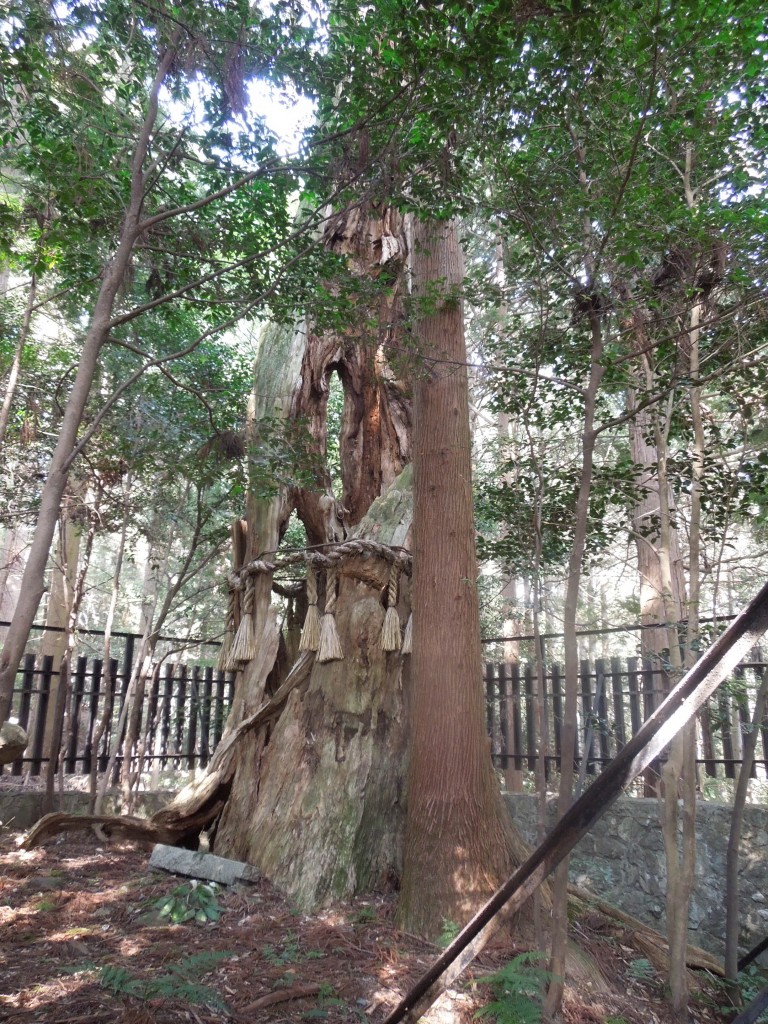
Gateway onto the fabulously tall avenue of sugi leading to Togakushi Jinja
Nature in Short / Hatsumode: Bringing in the New Year with prayers at shrines, temples
By Kevin Short / Special to The Japan News January 06, 2015
If you are living, working or visiting in Japan, whether in a tiny mountain hamlet or a huge urban hotel, you are within the parish-area of a small local shrine. Each of these shrines covers only a limited and usually clearly defined region, and offers their protection and blessings to everyone within that area. The parish-areas cover the entire nation (the system in the Ryukyu Islands is slightly different), and are coordinated by the prefectural Shrine Associations and the National Association of Shrines.

Sacred tree at Kirishima Jinja, claimed to be the mother of all sugi in the Mt Takachiho region
Most local shrines are too small to support a full-time caretaker or resident priest. Maintenance and care of the grounds are the responsibility of the residents. At this time of year the shrines have been swept and dusted, and the grounds have usually been raked. Visitors will also notice that fresh lengths of braided straw rope have been stretched between poles or pillars, or wound around a stone or the trunk of a huge tree.
These straw ropes are called shimenawa. They are renewed every year, and are decorated with small strips of white paper or cloth known as shide. All of a shrine’s precincts, inside the torii gate, are considered sacred, but the shimenawa designate spaces and objects that are especially sacred.
The tree decorated with a shimenawa is called the Shinboku or Goshinboku. Shin is an alternate pronunciation for kami, as the Shinto deities are called; and boku simply means ‘tree’ (Go is an honorific prefix). These sacred trees are usually old giants. The type of tree is not fixed, but certain species, such as ginkgo (icho), camphor tree (kusunoki) and Japanese cryptomeria (sugi) are popular.
Sugi are a species of conifer endemic to Japan. They grow naturally along the bottom of mountain streams and ravines, but are also planted widely as commercial timber trees. When properly pruned sugi grow tall and straight, and have fragrant wood that is easy to work but also extremely strong and durable.

Sugi can seem endlessly tall as if ascending to a higher realm, as here at Hakone Jinja
According to Japanese classic mythology, the first sugi were created when the great deity Susano-o, younger brother of the Sun Goddess Amaterasu, plucked hairs from his beard and scattered them across the countryside. This myth indicates that since ancient times the sugi have been highly regarded for their excellent wood.
Sugi is closely related to the coastal redwoods, giant sequoias and swamp cypresses of North America. Like most conifers, a single trunk runs straight from base to tip. Short side branches are attached directly to the trunk, giving the tree a tall and slim rather than wide-spreading profile. The reddish brown bark peels off in long vertical strips, which squirrels use to weave their nests.
The vertically peeling bark is a good field mark, but unfortunately several species of cypress in the genus Chamaecyparis (hinoki, sawara) show similar characteristics. The cypress leaves, however, are flattened, while those of the sugi are short and thick, with blunted tips. At this time of year the seed cones and seeds should also be on the ground underneath the tree.
Woody cones (kyuka in Japanese) are a characteristic feature of conifers. The sugi cones are about 2 centimeters long and very prickly. The cone wood, however, is relatively soft, so there is little danger of painfully pricking one’s pinky. Inside the cone are dozens of small brown flat seeds, about 5 to 6 millimeters long, equipped with thin, narrow membranes along the sides. These membranes act as sails, helping the seeds disperse on the strong winter winds.
During the autumn months, while the seeds are growing, the sugi cones remain tightly sealed. Come winter, however, the seeds ripen. The cones then open up and release the seeds. The seeds are shaken out while the cones are still attached to the branches, so most of the cones on the ground will be spent and already empty. A careful search underneath the tree, however, will usually produce several seeds, as well as a few strange looks!

Sugi are awesome specimens in themselves, but when touched by celestial lightning they are especially blessed - as with this blasted cedar on Kurama hill that forms the sacred heart of Osugigongensha

Nice article, Kevin! The Fuji Sengen Shrine north of Mt. Fuji in Fuji-Yoshida has some spectacular sugi, very well kept, with the roots spreading out in a solid mass. One gigantic tree stands to the left, and a “husband and wife” pair to the right.
I highly recommend the current winter season. With snow, this shrine is extra beautiful. It was one of my primary inspirations for embarking on the Shinto way.